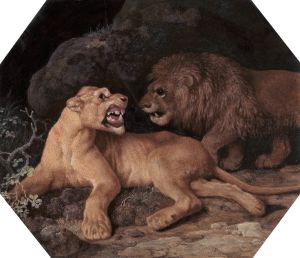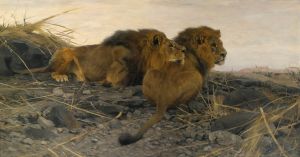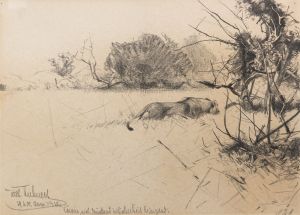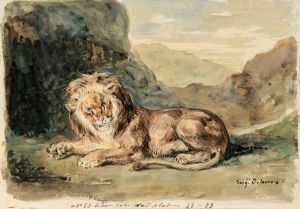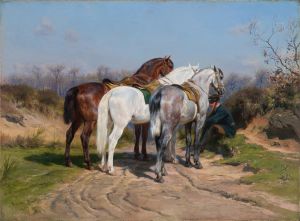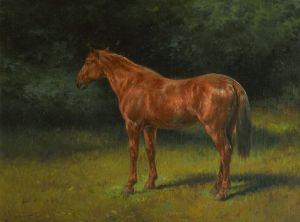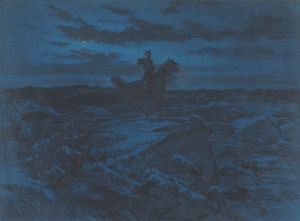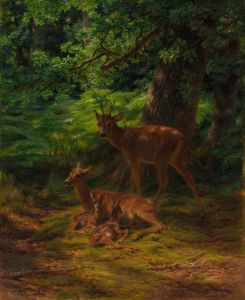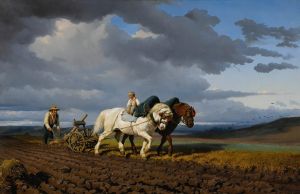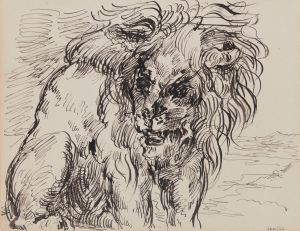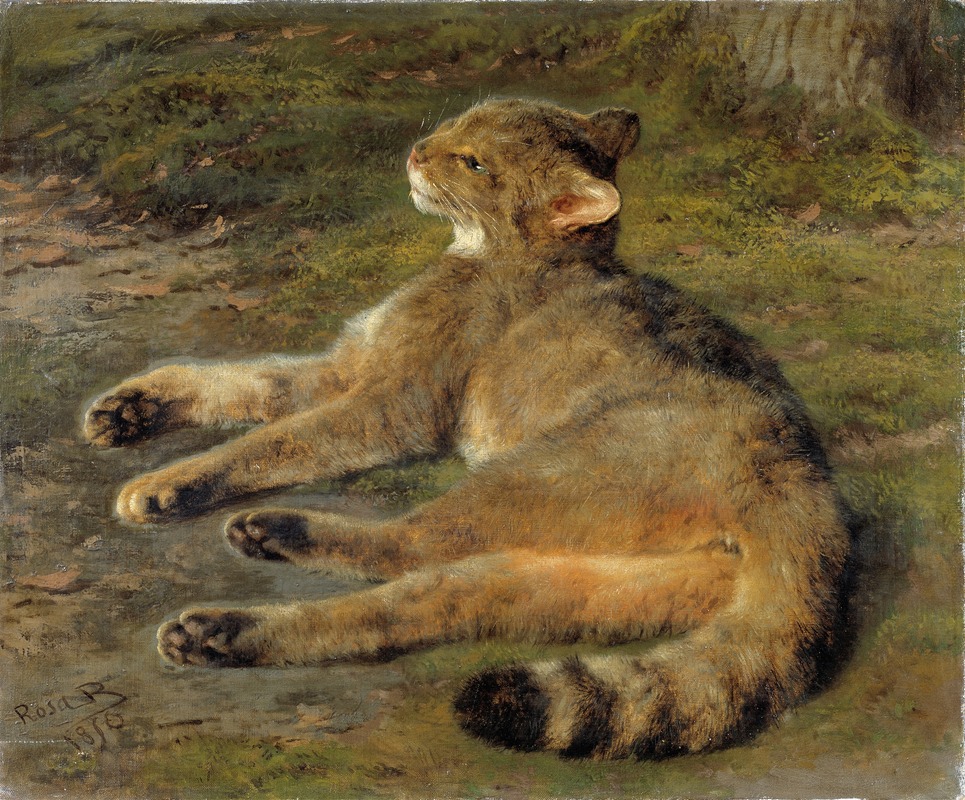
Wild Cat
A hand-painted replica of Rosa Bonheur’s masterpiece Wild Cat, meticulously crafted by professional artists to capture the true essence of the original. Each piece is created with museum-quality canvas and rare mineral pigments, carefully painted by experienced artists with delicate brushstrokes and rich, layered colors to perfectly recreate the texture of the original artwork. Unlike machine-printed reproductions, this hand-painted version brings the painting to life, infused with the artist’s emotions and skill in every stroke. Whether for personal collection or home decoration, it instantly elevates the artistic atmosphere of any space.
Rosa Bonheur was a renowned French artist of the 19th century, celebrated for her realistic depictions of animals and her significant contributions to the genre of animal painting. Born in 1822 in Bordeaux, France, Bonheur was encouraged by her father, a minor landscape painter, to pursue art from a young age. Her dedication and talent led her to become one of the most famous female painters of her time, breaking gender barriers in the art world.
One of Bonheur's lesser-known works is "Wild Cat," a painting that exemplifies her skill in capturing the essence and vitality of animal subjects. Although there is limited specific information available about this particular painting, it is consistent with Bonheur's broader body of work, which often focused on the natural world and its inhabitants. Her paintings are characterized by meticulous attention to detail, anatomical accuracy, and a deep empathy for her subjects, which she achieved through extensive study and observation.
Bonheur's approach to painting animals was revolutionary for her time. She often visited slaughterhouses, livestock markets, and even traveled to remote areas to observe animals in their natural habitats. This dedication to understanding her subjects allowed her to portray them with a level of realism and vitality that was unmatched by many of her contemporaries. Her work was not only artistically significant but also contributed to the scientific understanding of animal anatomy and behavior.
"Wild Cat" likely reflects Bonheur's interest in capturing the untamed and raw beauty of nature. While specific details about the painting's composition and history are scarce, it can be inferred that Bonheur applied her usual techniques of careful observation and detailed rendering. Her ability to convey the texture of fur, the intensity of a gaze, and the dynamic posture of animals would have been evident in this work, as it is in her more famous pieces like "The Horse Fair" and "Ploughing in the Nivernais."
Bonheur's work was widely recognized during her lifetime, earning her numerous accolades and honors. She was awarded the Legion of Honour by the French government, becoming the first woman to receive such a distinction. Her success paved the way for future generations of female artists, challenging the norms of a male-dominated art world.
Despite the lack of extensive documentation on "Wild Cat," Rosa Bonheur's legacy as a pioneering animal painter endures. Her works continue to be celebrated for their technical excellence and their ability to capture the spirit of the natural world. Bonheur's paintings remain influential, inspiring both artists and animal lovers alike with their beauty and precision. Her commitment to her craft and her ability to transcend the limitations of her era make her an enduring figure in the history of art.





